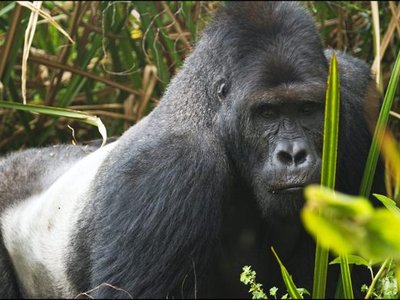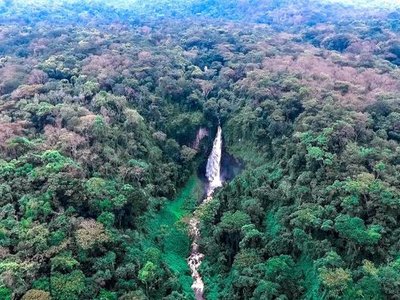Kahuzi-Biéga National Park


Covering 2,300 square miles, Kahuzi-Biéga
National Park is one of the largest national parks in the
Democratic Republic of the Congo
. It is also one of the last refuges of the eastern lowland gorilla, now considered critically endangered.
Kahuzi-Biéga National Park was established in 1970 by Adrien Deschryver, a Belgian photographer and conservationist who ranks alongside Dian Fossey as one of the great protectors of the world’s endangered gorilla population.
The vast park is named after the two dormant volcanoes located within its limits, Mount Kahuzi and Mount Biega. Both mountainous and lowland terrain are found within the park boundaries, covered with primary tropical forest that provides protection to a wide range of flora and fauna. These include around 136 species of mammals, 349 species of birds, and more than 1,170 plant species.
Most famously, Kahuzi-Biéga is home to one of the largest and most studied populations of eastern lowland gorillas (known as Grauer’s gorilla or
Gorilla beringei graueri
) in the world. Tragically, the eastern lowland gorilla population has declined globally by 77 percent over the last 20 years, the result of logging, mining, civil unrest, and the poaching of the gorillas for meat. In 2016, the global population was estimated at fewer than 3,800.
The situation in Kahuzi-Biéga has been even more drastic, with an 87 percent decline, exacerbated by the conflicts in Congo and
Rwanda
during the 1990s. Estimates in 2012 put the number of eastern lowland gorillas in the park at between 1,272 and 2,518 individuals in the lowland areas, and 170 in the highlands.
There have, however, been some small signs of improvement in Kahuzi-Biéga. Researchers found that one gorilla population, in the highland sector of the park, has grown. In 2008, a status report put the group’s population at just 125. Thanks to the brave efforts of the park’s rangers, who risk their lives to protect the gorillas, the group has now increased in size to between 200 and 250.